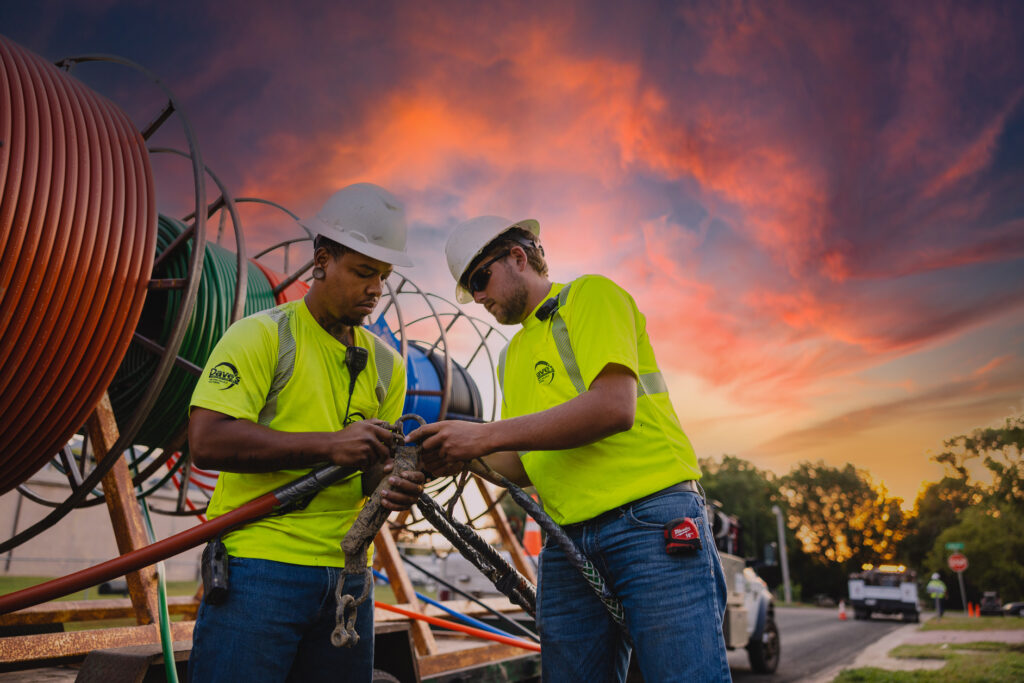By Rikin Thakker, Ph.D.
NCTA Chief Technology Officer & Senior Vice President
As 2025 progresses, the cable industry remains at the forefront of technological innovation, enhancing broadband performance, security, and consumer experiences. Here are some pivotal technology trends shaping the industry this year.
Advancements in Wi-Fi technologies and spectrum policy
Wi-Fi technologies are evolving rapidly, with Wi-Fi 7 deployments expected to gain further momentum.
- With greater spectral efficiency achieving higher throughput, lower latency, and enhanced multi-link operations, Wi-Fi 7 will further improve home and enterprise connectivity.
- Thanks to the use of the 6 GHz band, broadband providers will smoothly handle increasing amounts of indoor traffic, delivering a superior experience for users at home, in workplaces, and in public venues.
- Wi-Fi 7’s ability to operate across multiple frequency bands, leverage wider channels, and utilize advanced modulation schemes makes it a game-changer for indoor connectivity.
However, ensuring sufficient spectrum availability remains a critical challenge.
- Policymakers must balance the growing demand for unlicensed spectrum with the need for licensed spectrum to ensure innovation thrives without interference issues.
- The best solution lies in smart spectrum management strategies that support both Wi-Fi growth and cutting-edge applications.
The role of AI in the broadband industry
AI is playing a transformative role across broadband networks, from optimizing network performance to enhancing customer experiences.
- AI-driven Proactive Network Maintenance (PNM) will further enhance network reliability by identifying and addressing issues before they impact customer service.
- AI-powered customer support solutions, such as intelligent chatbots and personalized recommendations, continue to evolve, making interactions more seamless.
- The industry is also leveraging AI for smarter traffic management, improving efficiency, and reducing latency during peak usage periods.
Strengthening cybersecurity and network protection
With cyber threats growing in complexity, the broadband industry remains vigilant in strengthening our cybersecurity defenses.
- There is an increased focus on AI-driven threat detection, enabling real-time monitoring and response to potential vulnerabilities.
- Zero Trust Architecture (ZTA) principles are gaining further traction, ensuring rigorous authentication protocols across all network access points.
- Industry-wide collaboration, including public-private partnerships, is crucial in sharing intelligence and mitigating cyber risks more effectively.
The evolution of 10G and consumer expectations
The 10G platform continued to make significant strides in 2024, with more operators expanding trials and early deployments.
- As operators enhance network infrastructure, consumers will continue to experience increased multi-gigabit speeds, lower latency, and improved reliability.
- The rollout of DOCSIS 4.0 technology is playing a key role in delivering these advancements, enabling greater upstream and downstream capacity.
- Beyond speed, 10G will also enhance immersive applications such as AR/VR, cloud gaming, and AI-driven home automation.
Key trends shaping the broadband industry
Several other key trends are expected to shape the broadband industry this year:
- Network Sustainability: The industry is prioritizing energy-efficient network architectures and renewable energy adoption to reduce carbon footprints.
- Fiber Expansion: While DOCSIS 4.0 accelerates hybrid fiber-coaxial (HFC) advancements, operators are aggressively deploying fiber in targeted areas to meet growing data demands.
- Converged Services: With an increasing emphasis on seamless connectivity, further integration of broadband, mobile, and Wi-Fi services will deliver a unified user experience.
- Next-Gen Content Delivery: As streaming and immersive experiences grow, innovations in content delivery networks (CDNs) will optimize video quality and reduce buffering times.
As 2025 progresses, the cable industry remains committed to delivering faster, more secure, and more reliable broadband services, ensuring consumers and businesses alike benefit from these transformative advancements.








